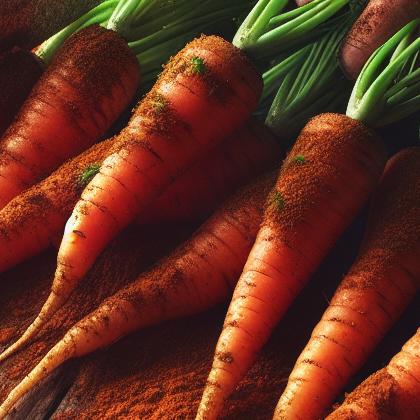Showing results for 'Carrots'
close
Carrots

A carrot is a biennial herb with a usually orange spindle-shaped edible root. It is a root vegetable, typically orange in color, though heirloom variants including purple, black, red, white, and yellow cultivars exist. The word "carrot" is first recorded in English around 1530 and was borrowed from the Middle French "carotte," itself from the Late Latin "carōta," from the ancient Greek καρωτόν (karōtón), originally from the Proto-Indo-European root *ker- ("horn"), due to its horn-like shape
Carrots Pairs With:
Food Item
Flavor Affinity Level

Did you know there are 433 food flavor pairings in my database for Carrots available. What you are seeing above is a random list of 30 items which pair with Carrots.
For the entire list, beautifully formatted, enter your email address and click the download button below, then I'll email it to you as a PDF.
Carrots Properties:
| Food Property | Type | Description |
|---|---|---|
| Flavor Profile | Sweet | Carrots have a natural sweetness that is enhanced when cooked. |
| Bitter | Carrots may have a slight bitterness, especially in older or larger carrots. | |
| Texture | Firmness | Carrots are known for their firm and crunchy texture, especially when raw. |
| Nutritional Value | Macronutrients | Carrots are a good source of carbohydrates and fiber. |
| Micronutrients | Carrots are rich in vitamin A and potassium. | |
| Fiber | Carrots are high in dietary fiber, which is beneficial for digestion. | |
| Color | Natural Pigments | Carrots are known for their vibrant orange color, which comes from beta-carotene. |
| Aroma | Volatile Compounds | Carrots have a fresh and earthy aroma, especially when raw. |
| Chemical Composition | Water Activity (aw) | Carrots have a high water content, contributing to their crunchy texture. |
| Cooking Behavior | Heat Conductivity | Carrots cook relatively quickly and evenly due to their high water content. |
| Water Retention | Carrots tend to retain moisture well when cooked, especially when steamed or boiled. |
Food Pairing App - Version 1.2.0
